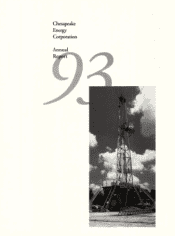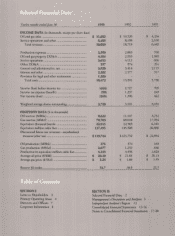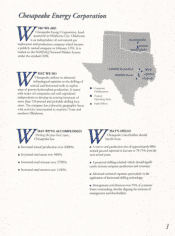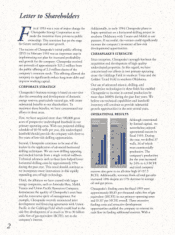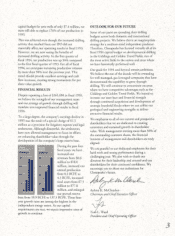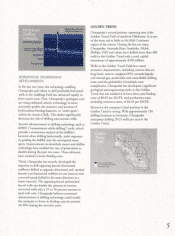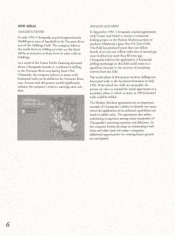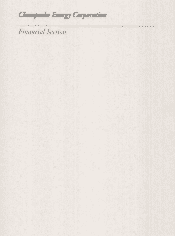Chesapeake Energy 1993 Annual Report Download - page 7
Download and view the complete annual report
Please find page 7 of the 1993 Chesapeake Energy annual report below. You can navigate through the pages in the report by either clicking on the pages listed below, or by using the keyword search tool below to find specific information within the annual report.
Horizontal
Drillin
I
GIDDINGS FIELD
Upper Austin Chalk
Lower Austin Chalk
Eagleford
Buda
Georgetown
Opposing Laterals
Stacked Laterals
HORIZONTAL TECHNOLOGY
DEVELOPMENTS
In the last two years, the technology enabling
Chesapeake and others to drill profitable horizontal
wells in the Giddings Field has advanced rapidly in
three major areas. First, Chesapeake's geologists now
are using enhanced seismic technology to more:
accurately predict the existence and location of
hydrocarbon-bearing fractures, or "sweet spots",
within the Austin Chalk. This ability significantly
decreases the risk of drilling uneconomic wells
Second, advancemeiits in drilling technology such as
MWD ('measurement-while-drilling") tools, which
provide a continuous analysis of the drillbit.'s
location when drilling horizontally, assist engineers
in guiding the drillbit into thç anticipated sweet
spots. Improvements in downhole motor and drilibit
technology have enabled the rate of penetration to
double during the past two years. These advances
have resulted in lower finding costs.
Third, Chesapeake has recently developed the.:
expertise to drill opposing laterals (horizontal
weilbores drilled in opp.osite directions)and stacked
laterals (one horizontal wellbore in one interval with
a second lateral drilled itt the same direction in a
lower interval).The opposing lateral and stacked
lateral wells can double the amount of reserves.
recovered with ottly a 25 to 50 percent increase in
total well costs. Chesapeake believes continued
advancements in drilling technology coukL enable
the company to lower its finding costs by another
10-20% during the next few years. 1
GOLDEN TREND.
Chesapeake's second primary operating area is thç
Golden Trend' Field of southern Oklahoma. It is otte
of the most active fields in the Mid-Continent
region of the nation. During the last ten years,
Chesapeake, Amerada Hess, Anadarko, Mobil,
Philli13s, OXY and others have drilled more than 40Q
wells in the Golden Trend with a total capital
investment of approximately $350 million
Wells in the Golden Trend Field have many
attractive characteristics, including reserves that are
long-lived, reserves weighted 85% towards liquids-
rich natural gas, predictable and controllable drilling
costs, and the probability of multiple zone
completions. Chesapeake has 'developed a significant
geological and engineering niche in the Golden
Trend that has enabled it. to have three-year finding
costs of $0. 85 per MCFE, and production costs;
including severance taxes, of $0.39 per MCFE.
Moreover, the company's land position in the
Golden Trend is strong. With approximately 150
drilling locations in inventory, Chesipeake
anticipates driliing.20-25 wells per year in the
Golden Trend.
Golden
Trend
ield
Chspk Oprd WdI,
1994 Chpk 1'podWdl
&

